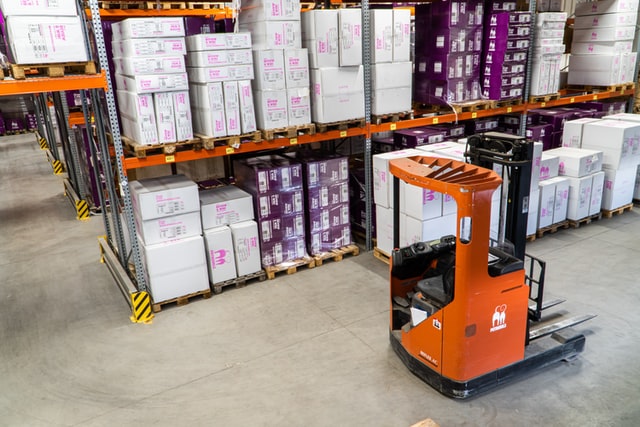How Should You Handle Shipping?

By Richard Parkin
One of the most frequently overlooked concerns for any business, shipping should always be a major consideration when building and scaling a business with physical products. Handled correctly, shipping can change from a potential liability to an effective source of additional revenue, driving sales and customer satisfaction forward.
This blog is about exploring some of your potential options with shipping, from basic issues and considerations to more advanced potential options. Depending on exactly how your business operates and sells, there will naturally be different points to weigh – a company with a large-scale international presence needs a different approach than one operating exclusively in a single state, as an obvious example.

Reviewing Your Fulfillment
As a primary consideration, it’s always worth exploring your current fulfillment choices. There are several distinct points to consider here:
Price Point:
What are you really paying for each shipped order? Depending on your products and fulfillment provider, these costs can significantly vary. Consider your average customer’s order, and their approximate location – what does it cost to fulfill a standard shipment? If one of your upsells became part of your average order, how would those costs change?
As part of the scaling process typically involves reaching customers in new locations, consider how this may affect your costs – if your average customer moves from Kansas to California, how much extra will you pay on a standard order?
You should be regularly reaching out to other fulfillment providers for quotes, even if you don’t plan to move. It’s always worth understanding exactly what kind of deal you’re getting.
Service Level & Quality:
How effectively is your fulfillment provider currently operating? You should be receiving a regular report from your provider, covering their general performance, from service speed to spoilage levels, failed deliveries and the like. Depending on your specific industry, your benchmarks may vary significantly, but are very much worth considering – is your fulfillment provider doing better than standard?
Does your fulfillment provider offer an SLA for their services – and what happens if they underdeliver? While this may not be essential, it’s worth considering what steps your provider is taking to ensure that they deliver on their promises to you.
Of course, the numbers don’t tell the full story. Take the time to find out what your customers have to say about your fulfillment. Talk to your Customer Support team, check through the reviews you’re receiving – are your customers regularly reporting any issues? While you’re usually just going to see the negative here, rather than any positives, it’s vital to understand if things frequently go wrong in a specific way.
Scalability:
As you scale your business, you need to be certain that your fulfillment provider is capable of scaling with your demand. If you start processing 2, 5, 10 times your current number of orders, is your fulfillment company going to keep up? It’s worth talking with your contacts about the scale they can effectively operate at, particularly during peak demand times.
Scalability isn’t just about the number of orders being processed. How are your costs going to change as you scale your sales? Past a certain level, it may be worth considering alternate, more cost-efficient providers. Here, it’s often worth starting early. Consider your future plans – what realistic sales levels do you anticipate reaching, and how are your costs going to look at these levels?
It’s always easier to switch providers at a small scale than to worry about handling it later on. Does it make sense for your business to incur some minor costs by switching early on to avoid the major costs of improving your fulfillment service at a larger scale?
Physical Walkthrough:
Do you know how your fulfillment provider is handling your orders? Conducting a thorough physical walkthrough is an absolute must. You need to verify that your fulfillment provider is fully following the SOPs they claim to use, need to be certain that the company has appropriate procedures in place, and need to verify that all products are being handled correctly.
If your fulfillment provider also handles your manufacturing, carrying out a walkthrough is even more essential. You need to understand how your products are being manufactured, especially if you’re selling supplements, or other products with greater-than-standard regulations and requirements.

Marketing Your Shipping
According to a 2021 study, a full 66% of shoppers expect free shipping for everything they buy online. This can create an obvious issue for retailers, especially those with limited distribution centers, giving them the unpleasant choice of either losing a significant number of customers at checkout, or eating the full costs of shipping each order.
In reality, ‘free shipping’ generally isn’t free – most companies are either operating at a scale where they can afford to take the losses in return for repeat business, or factoring at least some part of the shipping costs into their prices.
Even if you’re unwilling to raise prices, however, shipping doesn’t have to pose a problem. By approaching the issue in an out-of-the-box way, you can minimize losses, while actually improving your conversion rate.
There are several ways to approach this:
- If you offer a wide range of products/ upsells, you may want to offer free shipping above a certain price point. Incentivize this at checkout (“add just $3.97 more to your cart for free shipping”).
- Offer free shipping for specific items – allow the customer to benefit from free shipping for part of their cart, and you’ll maintain some of the psychological advantage of offering free shipping, without entirely losing out on the shipping costs.
- Reward loyalty – send out occasional free shipping codes, either for email signups or to incentivize recurring purchases. If you’re collecting emails, you should be able to monetize your mailing list – offering that free shipping code builds a lot of goodwill for your customers.
Again, this is heavily business-dependent. Not every approach will work for every retailer (or their customers). It’s worth considering several approaches for your free shipping.

Business-Specific Shipping Issues
Depending on how your business operates, there may be some additional shipping issues requiring consideration. Again, many of these don’t necessarily need to be liabilities – they can become an effective tool for your business, or be fixed entirely in some cases.
High Return Rates:
Return rates are certainly not set in stone. In virtually every case, it’s possible to cut down your overall returns significantly. It all depends on how your team handles people requesting refunds. In a surprising number of cases, people asking for refunds don’t necessarily want them – they have some issue with your product, the price they’re paying, something along those lines.
By offering an alternative resolution path, you’ll be able to transform some returns into positive, successfully retained customers. Offer a discount, allowing the customer to keep their purchase at a cheaper overall price; offer a free alternative product, offer them eBooks to improve their success with your product – different options suit different businesses.
Expensive International Shipping:
Are your products particularly popular with an international clientele? Overseas shipping comes with a high price, especially if you’re shipping between continents. If you’re consistently seeing high order volumes from one region, it may be worth looking into additional distribution centers/ warehouses, minimizing the initial cost of transport while still offering your products to your overseas customers.
Bulky Items:
While a large box may command attention and unconsciously reassure a buyer that they’re getting value for their money, it’s likely to result in additional costs on your side: shipping unnecessarily large boxes can add a significant amount to your fulfillment costs. It may be worth reconsidering your packaging – are you really getting the best option?
Tracking Options:
Most large-scale fulfillment agencies should be able to provide your customers with package tracking information, and this additional level of information is increasingly expected by buyers. If you’re not offering your buyers full tracking information, you’ll likely see your CS team become increasingly busy, having to deal with buyers wanting to know where their packages are.
Discuss tracking options with your fulfillment provider, if you haven’t already.

